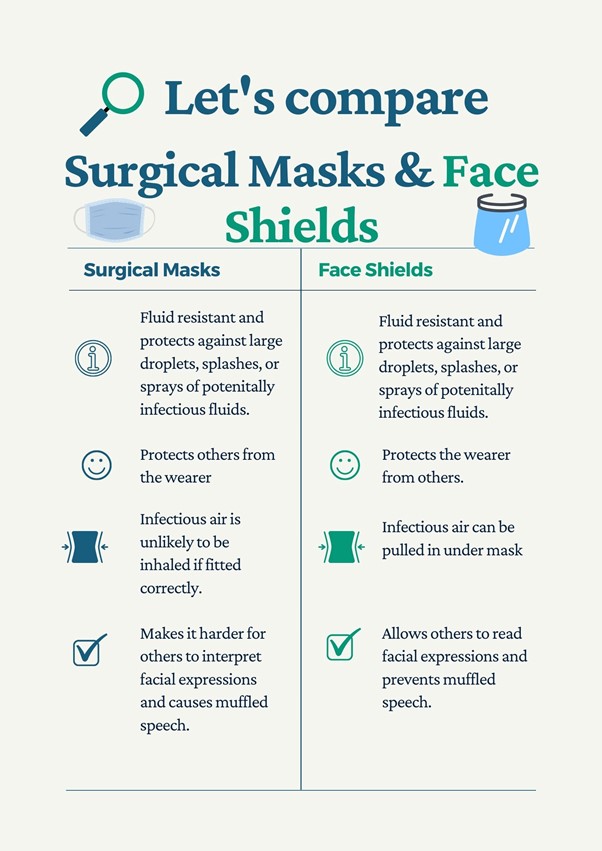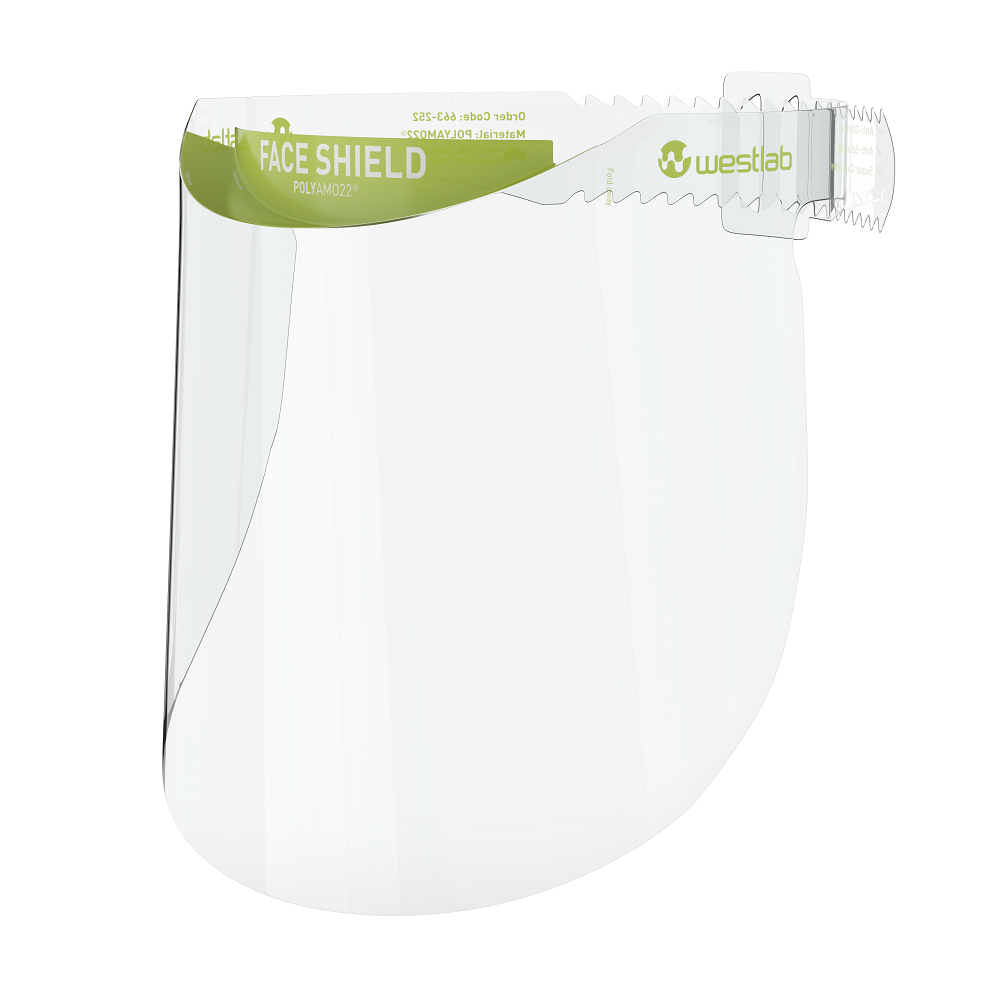What are face shields?
At the start of the pandemic, there was much confusion about wearing face shields and masks and the difference between them. Two years after COVID-19 first landed in Australia, face shields have found their place and are here to stay.
Face shields are a visor made of plastic used to cover the entire face protecting the wearer from droplets containing pathogens – bacteria and viruses such as COVID-19. Face shields are a common part of PPE (Personal Protective Equipment) used by workers in many settings to prevent respiratory illnesses like COVID-19.
Is it worth using a face shield?
When a person coughs or sneezes, they release viral droplets into the air. These droplets can be directly inhaled by someone nearby and spread the infection to the next person. Research suggests face shields are particularly effective in providing a high level of protection to the wearer against close range virus.
In one study, Face shields were found to significantly limit healthcare workers’ short-term exposure to large infectious aerosol particles. However, smaller viral particles posed a threat to stay in the air longer and flow around the face shield more easily, allowing them to be inhaled.
With that being said, the main purpose of face shields is to protect the wearer. While face shields are useful to some extent in preventing outward virus transmission from the source, their efficacy is limited in doing so. They are more of a defensive measure.
Aren’t face shields and masks the same thing?
In a short answer, no. When masks are worn correctly, they act as a ‘filter’ to trap infectious particles from being inhaled by the wearer.
While face shields protect wearers from the air directly in front of them, viral particles of air can be pulled in around the shield, particularly small airborne speech droplets that float in the air. Face shields, while providing some source control, are not as good as masks at preventing particle transmission outward.
Face shields are thus an important supplement to respiratory protection for personnel caring for patients with respiratory illnesses. They cannot, however, be used in place of respiratory protection when it is required.
This is why current health advice encourages high-risk workers to wear a combination of both a mask and a face shield when exposed to potentially infectious members of the public.

Workplaces and industries that require face shields
Health departments consider face shields essential and most needed in workplaces and environments that pose a high risk of coming into contact with infectious people. They are ideal for:
- Frontline workers
- Teachers and trainers
- Pathology collectors / COVID-19 screeners
- Aged care & disability workers
- Public transport workers
- Public servants who come into contact with a large number of people on a daily basis
- Emergency service personnel
Face shields are popular among teachers they allow students to read their facial expressions and speech whilst still maintaining some level of protection.
All these professionals listed above ideally want a face shield that is comfortable and that does not distort their vision.
Types of face shields
Disposable face shields

Disposable face shields are designed for single use and are the preferred PPE for healthcare workers. Do not attempt to repair or reuse your face shield if it becomes damaged. Replace it with a fresh one. Disposable Face shields are inexpensive and can be easily replaced. You can even purchase them in large quantities.
Cheaper disposable face shields get foggy, can be uncomfortable and have poor visibility. Disposable face shields designed and manufactured by Westlab are made of high clarity polypropylene and have an antiglare brow guard with antifog vents to prevent the build-up of fog. The ultra-lightweight design remains comfortable after hours of use. Westlab disposable face shields are Australian-made and 100% recyclable.
Reusable face shields

Reusable face shields are comprised of thicker plastic. Not only do they prevent infection, they can also be for safety to prevent chemical spills and used for safety reasons in some industries. Reusable shields are preferred for teachers as they can simply clean them and reuse them after each class. Reusable shields are commonplace for healthcare workers too.
Westlab reusable face shields are made from durable 0.75mm PETG to provide ultimate clarity and are completely foamless making them easy to disinfect after each use.
The best way to disinfect your reusable face shield is by using 70% isopropyl alcohol and simply wiping clean.
Key points
- Face shields can further prevent infection against COVID-19 and are particularly useful in healthcare and other high-risk settings.
- Face shields are most effective to prevent infection of the wearer when used in conjunction with face masks.
- Disposable and Reusable face shields are equally effective and best chosen based on the users’ needs.
